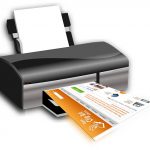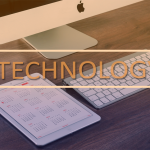For the past few years, 3D printers have been all the rage, and millions of individuals and businesses have rushed to glean the claimed advantages of additive manufacturing.
However, while there are plenty of perks that this technology provides, there are also some pretty significant caveats that a lot of buyers do not consider ahead of making a purchase. To give you a more balanced view of 3D printers, here are a few reasons why you should hold onto your cash instead.

Outsourcing could be cheaper
Avoiding buyer’s remorse is not just about ignoring the hype around 3D printers; it is also necessary to look at whether or not buying one makes good financial sense for your needs.
The fact that there are now online 3D printing services available so that you can outsource your prototyping needs to a third party that has all of the kit and experience to turn your designs into amazing, tangible parts should give you pause for thought.
For example, with outsourced 3D printing in New York City, it may be more affordable and straightforward to take this route rather than purchasing equipment for permanent in-house use. This could be one of the ways you save money if you are running a small, emerging organization.
Quality varies wildly
It is not just the capabilities of the 3D printers themselves which can vary dramatically from cutting edge to bargain basement, but also the materials used in the printing process that will impact the extent to which you are satisfied with the components you produce.
The chief issue in this context is that even if the printer and the materials are top-notch, there are still limitations when it comes to sturdiness. 3D printed parts can warp with ease, especially when exposed to temperatures that are only a little higher than ambient.
Parts are unavoidably porous
As 3D printers turn CAD creations into physical objects by building them up layer by layer, there will always be thousands of tiny holes across the surface of whatever you make.
This means that if you are hoping to make something that is watertight on even a basic level, it is almost impossible with this method.
Speed is limited
While 3D printer speed has improved over time, it is still a comparatively slow process, at least when seen alongside speedier alternatives like CNC mills and routers.
Even relatively simple designs will take hours to print, while more complex parts may leave you tapping your foot for days at a time.
Of course, this may be entirely acceptable in the scope of the project you are running, but not everyone will have the patience for 3D printers.
Maintenance is tricky
If you are used to the simplicity and reliability of standard inkjet or laser printers, you will be disappointed to learn that 3D printers need a bit more hands-on involvement from the user to avoid issues arising.
From the initial setup to the regular maintenance and manual intervention, you will need to be willing to tinker with this tech.
So there you have it; while 3D printers are definitely a great choice in many scenarios, you should not rush to buy one without weighing up your options.











